When Your Little Escape Artist Needs a Big Kid Bed
I remember the morning I walked into my daughter’s room and found her standing on top of her dresser, grinning like she’d just summited Everest. She’d climbed out of her crib, scaled the furniture, and was ready to take on the world. That’s when I knew we had a problem. The crib had officially lost its purpose.
Here’s the thing about parenting that nobody warns you about: just when you get comfortable with one stage, your kid decides they’re done with it. We spend months perfecting the crib setup, getting blackout curtains, finding the perfect mattress, and then boom. Your toddler figures out they can launch themselves over the railing like a tiny gymnast. That first escape is equal parts impressive and terrifying. You’re proud of their physical development but also wondering if you’ll ever sleep soundly again.
Most experts suggest making the switch somewhere between 18 months and two years old. But let me be real with you. That’s a guideline, not a law carved in stone. Some kids are perfectly content in their cribs until they’re three. Others are plotting their escape at 15 months. I’ve seen both ends of the spectrum among my friends’ kids. My neighbor’s son was such a chill toddler that he happily stayed in his crib until almost three years old. My daughter? She was trying to break out at 20 months like she was planning a prison escape.
The real signal isn’t about age. It’s about behavior. When your child can consistently climb out of their crib, that’s your wake up call. We’re not talking about one lucky attempt where they somehow managed to get a leg over the rail. I’m talking about regular, repeated escapes where you put them down for a nap and find them wandering the hallway five minutes later. That’s when the crib becomes a safety hazard rather than a safe sleeping space.
Another sign? When your toddler starts asking for a “big kid bed.” Kids are surprisingly aware of their own development. They see older siblings or friends in regular beds and want to join the club. When my daughter started pointing at beds in stores and saying “me want that,” I knew her crib days were numbered. She was ready to move on, mentally if not physically.
Then there’s the potty training factor. If you’re working on nighttime potty training, a toddler bed makes life infinitely easier. Nobody wants to lift a half asleep child out of a crib multiple times per night for bathroom trips. Trust me on this one. A bed they can easily get in and out of saves everyone’s back and sanity.
Some parents worry about making the switch too early. What if my child isn’t ready? What if they fall out? What if they refuse to sleep in it? These are valid concerns. I had all of them. But here’s what I learned: kids are more adaptable than we give them credit for. The transition might be bumpy for a few nights, but most children adjust faster than their anxious parents do.
The timing can depend on other life changes too. If you’re expecting another baby, you might need the crib sooner than planned. That’s okay. Just try to make the transition a few months before the baby arrives. You don’t want your older child to feel like they’re being kicked out to make room for the new baby. Frame it as a promotion, not an eviction. “You’re getting a big kid bed because you’re growing up” sounds a lot better than “the baby needs your crib now.”
I’ve talked to parents who waited too long to make the switch. One friend told me she found her son sleeping on the floor next to his crib because he’d given up on climbing back in after his midnight wanderings. Another friend’s daughter kept getting stuck halfway over the crib rail, crying until someone came to help her down. These situations are stressful for everyone involved.
Watch for signs of restlessness too. If your toddler suddenly starts fighting bedtime when they used to go down easily, the crib might feel too confining. They’re growing, becoming more aware of their bodies and their space. That cozy crib that once felt like a safe nest can start feeling like a cage to an active toddler who wants to move around more freely at night.
There’s no perfect moment that will reveal itself with a beam of light from the heavens. You just have to read your kid and trust your gut. When the crib stops working for your family, you’ll know. Maybe it’s because of safety concerns, maybe it’s because of practical reasons like potty training, or maybe it’s just because your child is ready for something new. All of these reasons are good enough.

What Exactly Is a Toddler Bed Anyway?
So you’ve decided it’s time to ditch the crib. Now what? Enter the toddler bed, that strange middle ground between baby furniture and real furniture. When I first started researching these things, I was confused. Why not just go straight to a twin bed? Turns out, there are some pretty good reasons.
A toddler bed is basically a miniature bed that sits low to the ground. Most of them use the same mattress size as a crib, which is great if you already have a crib mattress you love. The frame is lower than a regular bed, usually just six to eight inches off the ground. This means when your kid inevitably rolls out at 2 AM, they’re not falling very far. It’s more of a gentle tumble than a dramatic crash.
The low height was a game changer for us. My daughter rolled out of her toddler bed exactly three times in the first week. Each time, she barely woke up. She’d just roll right back in or continue sleeping on the rug next to the bed. If she’d been in a twin bed, those falls would have been much more dramatic and probably would have resulted in some tears and a few bruises.
These beds usually come with some kind of guardrail or side panel to help prevent those middle of the night tumbles. The rails aren’t as high as crib rails, which is the whole point. Your child can easily climb in and out on their own, but there’s still a little barrier to keep them from rolling straight onto the floor every single night. Some beds have rails on both sides, others just have one. We went with a bed that had a rail on one side and we pushed the other side against the wall. Worked perfectly.
Here’s where it gets fun. Toddler beds are designed with kids in mind, which means they come in every imaginable shape and style. We’re not talking about boring wooden rectangles here. You can find beds shaped like cars, castles, houses, boats, dinosaurs, princess carriages, and pretty much anything else a marketing team can dream up. This is where your child’s personality gets to shine.
Letting your kid pick their bed was the best advice I got during this whole process. My daughter went from being nervous about leaving her crib to being absolutely thrilled about bedtime when she got to choose a bed that looked like a little cottage. She felt ownership over the decision. It was her bed, her choice, her space. That sense of autonomy made the whole transition smoother than I could have imagined.
I’ve seen some parents make the mistake of surprising their kid with a new bed. They think it’ll be this magical reveal, like on those home makeover shows. Sometimes that works out great. Other times, the kid freaks out about the sudden change and refuses to sleep in the new bed for weeks. Involving your child in the selection process gives them time to get excited about the change. They can anticipate it, talk about it, and mentally prepare for it.
When we went bed shopping, I gave my daughter three options that fit our budget and space requirements. Then I let her make the final call. She must have climbed in and out of each bed about fifty times in the store. The sales person probably wanted to strangle us. But by the time we left, she was counting down the days until her new bed would be delivered. She told everyone we met about her “cottage bed.” The mailman heard about it. The grocery store cashier heard about it. Her stuffed animals definitely heard about it.
The size of a toddler bed is perfect for that in between stage. It’s not so big that your child feels lost in it, but it’s spacious enough that they can move around comfortably. They can sit up, roll over, and spread out a bit without the confined feeling of a crib. Yet it’s still small enough to fit in most bedrooms without taking over the entire space.
Most toddler beds are designed to be used for a few years, typically until your child is around five years old or 50 pounds. That’s when you’ll probably need to move up to a twin bed. So you’re looking at getting maybe three to four years of use out of a toddler bed. For some families, that’s worth the investment. For others, it feels like buying furniture that has an expiration date stamped on it.
The price range varies wildly. You can find basic toddler beds for under a hundred dollars. Fancy ones with elaborate designs and extra features can run several hundred dollars. We went somewhere in the middle. I wanted something well made that would last through multiple kids if we decided to have more, but I wasn’t about to spend a fortune on a bed my daughter would outgrow in a few years.
One practical note about the whole transition: timing matters. Don’t make this change right before a big trip or during a stressful period. We made the switch during a calm week at home when we could focus on the new bedtime routine without other distractions. Some kids adjust immediately. Others need a week or two to feel comfortable. Give yourself and your child that grace period to figure things out together.

The Wild World of Themed Toddler Beds
Let’s talk about the fun stuff. Once you start looking at toddler bed designs, you realize that furniture designers have been having way too much fun with this category. The options are borderline ridiculous, in the best possible way. We’re talking about beds that look like they belong in a theme park, not a bedroom.
Race car beds are everywhere. Walk into any kids’ furniture store and you’ll see at least five different car bed designs. There are sports cars, race cars, police cars, fire trucks. My friend’s son has a red race car bed that makes engine noises when you press a button on the steering wheel. He loves it. Does it drive his parents slightly crazy at 6 AM on a Saturday? Absolutely. But the kid sleeps in his own bed every night without complaint, so they’re calling it a win.
The appeal of a race car bed is pretty universal among the three to five year old crowd. Kids love vehicles. They love speed. They love pretending they’re driving. Putting all of that together into a bed feels like the ultimate toy. Some race car beds even come with working headlights or sound effects. Others have built in storage areas where the trunk would be. You can find pretty elaborate designs that look like they drove straight out of a Pixar movie.
Captain’s beds bring a nautical theme into the bedroom. These are designed to look like the beds you’d find on a ship, complete with storage drawers underneath. The storage component is actually super practical. You can use those drawers for pajamas, extra blankets, stuffed animals, or whatever else you need to stash. Some captain’s beds have three or four drawers built in, which is a lifesaver in small bedrooms where closet space is limited.
My nephew has a captain’s bed with a ship’s wheel attached to the headboard. He pretends he’s sailing to different islands every night before bed. His imagination runs wild with it. His mom tells me it’s helped with bedtime because he’s excited to “sail his ship” to sleep. She plays along with the game, asking him where he’s sailing tonight. One night it’s a tropical island, the next night it’s Antarctica to see penguins. Whatever works, right?
Then you’ve got the castle and fort beds. These are huge hits with kids who love medieval stuff or just enjoy having their own little fortress. Some of these beds have towers, turrets, and even fabric walls that turn the sleeping area into a proper castle room. Others are designed to look like woodland forts or treehouses. They tap into that universal childhood desire to have a secret hideout, a special space that feels like it belongs only to them.
I’ve seen some incredibly elaborate castle beds with slides attached. Your kid climbs a ladder to get into bed, then slides down a slide to get out in the morning. It’s half bed, half playground equipment. Genius or chaos? Depends on your perspective. My daughter would have lost her mind over something like that. I would have lost mine too, but for different reasons. Can you imagine trying to get a hyped up kid to settle down for bed when their bedroom contains a slide?
House shaped beds are another popular option. These frames look like little cottages or houses, sometimes with windows and even tiny doors. The one we ended up getting for my daughter falls into this category. It has a peaked roof frame and window cutouts on the sides. She hangs curtains in the windows and treats it like her own little house within her room. It’s adorable and functional.
The house bed has created this cozy den feeling in her room. She likes to read in there during the day, not just sleep in it at night. It’s become her retreat space. When she needs some quiet time, she crawls into her house bed with some books and her stuffed animals. I didn’t anticipate that bonus feature when we bought it, but it’s been great for teaching her about having her own space and respecting other people’s need for space too.
Princess beds are exactly what they sound like. Carriage shaped beds, beds with canopies and sparkly details, beds in pink and purple with crowns on the headboard. If your kid is into princesses, these beds are like sleeping in a fairytale every night. Some of them are over the top fancy with tons of decorative elements. Others are more subtle with just a few princess themed touches.
I’ve got nothing against princess beds, but I’m glad my daughter didn’t want one. They tend to be harder to match with room decor as your child’s interests change. A race car is pretty specific too, but somehow those feel a bit more timeless. Maybe it’s just me. Every family has different taste and different tolerance for themed furniture.
Then there are the more unique options. Dinosaur beds with a T-Rex head on the footboard. Airplane beds with wings. Beds that look like trains or boats or even fire-breathing dragons. The creativity is honestly impressive. Someone sat down and thought, what if we made a bed that looks like a pterodactyl? And then they actually did it.
The downside to these highly themed beds is that your child’s interests might change faster than you want to replace furniture. The kid who’s obsessed with dinosaurs at three might be all about outer space by five. That dinosaur bed suddenly feels very specific and hard to work with. This is why some parents stick with more neutral designs or go straight to a regular twin bed. It’s a valid concern.
But I think there’s something special about honoring your child’s current passion. Yes, interests change. Kids grow and develop new favorites. That’s part of childhood. But right now, in this moment, your three year old loves trucks more than anything in the world. Letting them have a truck bed validates their interests and makes their room feel like it truly belongs to them. You can always repaint or repurpose the bed later if needed.
When you’re looking at themed beds, check the quality of construction. Some of these elaborate designs are more focused on looking cute than being sturdy. You want a bed frame that can handle a jumping, wiggling, rolling toddler. Shake it in the store. Sit on it yourself. Make sure it’s solid. A bed that wobbles or creaks is not going to last through the toddler years.
The Magic of Convertible Cribs
Now, if all these toddler bed options feel overwhelming or like too much commitment, let me introduce you to the convertible crib. This is the Swiss Army knife of baby furniture. It transforms as your child grows, which means you might only need to buy one piece of furniture for your kid’s entire childhood. Sounds too good to be true? It kind of is, but it’s still pretty great.
Convertible cribs come in different levels. A standard convertible crib transforms from a crib into a toddler bed by removing one side and adding a small guardrail. That’s the most basic version. Then you’ve got 3 in 1 cribs that go from crib to toddler bed to daybed. The most elaborate are 4 in 1 cribs that transform from crib to toddler bed to daybed and finally to a full size headboard and footboard for a twin or full sized mattress.
We didn’t go this route with my daughter because we already had a crib before I learned about convertible options. But my sister bought one when she was pregnant and she swears by it. Her son is now six and still using the same piece of furniture, just in its daybed configuration. She plans to convert it to a full twin bed setup when he’s a bit older. One purchase that lasts through multiple stages of childhood? That’s pretty appealing from a budget standpoint.
The idea behind convertible cribs makes perfect sense. Your baby grows. Their needs change. Instead of buying multiple pieces of furniture over the years, you invest in one quality piece that adapts. You’re not dealing with the hassle of selling or storing old furniture and shopping for new stuff every few years. The furniture grows with your child.
The transition from crib to toddler bed is incredibly smooth with a convertible crib. The furniture stays in the same spot. The mattress stays the same. The overall structure is familiar. You’re just removing one side rail and possibly adding a smaller guardrail. Your child is sleeping in essentially the same place they’ve always slept, just with a new configuration that gives them independence. That familiarity can make the whole process less scary for kids who are anxious about change.
My sister said the conversion took her about 20 minutes with a screwdriver. The instructions were clear, all the necessary hardware was included, and it wasn’t complicated. She did it while her son was at preschool so when he came home, his crib had magically transformed into a toddler bed. He was thrilled. No fear, no resistance, just pure excitement about his “big boy bed.”
The quality of convertible cribs varies quite a bit. At the lower end, you’ll find cribs made from composite wood or particleboard with veneer finishes. These are more affordable but they might not hold up as well over many years of use and multiple conversions. At the higher end, you’ll find solid wood cribs that are built like tanks. These cost more upfront but they’re heirloom quality furniture that could genuinely last through multiple children and even generations.
Solid wood convertible cribs are particularly popular. Oak, maple, pine, and cherry are common wood choices. These cribs are heavy, sturdy, and can handle whatever abuse a toddler dishes out. They don’t wobble. They don’t creak. They feel substantial and safe. My friend has her grandmother’s solid wood baby bed that has been converted and reconverted through three generations of babies. That’s the kind of furniture that becomes a family treasure.
You can find convertible cribs in every style imaginable. Traditional designs with spindle railings and curved details. Modern cribs with clean lines and minimalist aesthetics. Rustic farmhouse styles. Mid century modern looks. Whatever your home decor style, there’s probably a convertible crib that matches it. This is nice since the furniture is going to be in your home for many years.
Some convertible cribs come with additional features that make them even more functional. Built in drawers underneath the crib provide storage for diapers, clothes, or toys. Changing table attachments that can be removed as your child grows. Adjustable mattress heights that let you lower the sleeping surface as your baby learns to stand. These extra features add to the cost but can be worth it for the added convenience.
The adjustable mattress height is particularly smart. When your baby is tiny and can’t move around much, you keep the mattress at the highest setting so you’re not bending over as far to put them down. As your baby learns to sit and then stand, you lower the mattress so they can’t climb out. By the time you’re ready to convert to a toddler bed, the mattress is already at the lowest setting where it’ll stay.
One thing to watch out for when buying a convertible crib is what’s included versus what costs extra. Some cribs come with all the conversion parts you’ll need. Others require you to purchase separate conversion kits when you’re ready to change configurations. Those kits can cost anywhere from fifty to two hundred dollars. Make sure you understand what you’re getting with your initial purchase and what you’ll need to buy later.
I’ve heard stories of parents who couldn’t find the conversion kit for their crib years later when they needed it. The company went out of business or discontinued that model or stopped making the parts. Then they’re stuck with a crib that can’t be converted. That’s frustrating. When you’re buying a convertible crib, go with an established brand that’s been around for a while and seems likely to stick around.
The lifespan of a good convertible crib can genuinely extend from birth through the early teen years if you get one that converts all the way to a full size bed frame. That’s roughly 12 to 13 years of use from one piece of furniture. When you break down the cost per year, even an expensive convertible crib starts to look like a pretty good investment compared to buying a crib, then a toddler bed, then a twin bed over those same years.

Picking the Right Convertible Crib
Shopping for a convertible crib can feel overwhelming when you start looking at all the options. There are hundreds of models out there at wildly different price points with varying features. How do you choose? Let me walk you through what actually matters based on what I learned from my sister’s research process and talking to other parents.
Material matters more than you might think. Solid wood cribs are the gold standard for durability and safety. They’re made from real wood all the way through, not just a wood veneer over cheaper material. Pine is usually the most affordable solid wood option. It’s softer than some other woods, which means it might get dinged or scratched more easily, but it’s still plenty strong for a crib. Oak and maple are harder woods that resist damage better but cost more. Cherry and walnut are premium options that are beautiful but pricey.
Then there’s manufactured wood, which includes things like MDF, particleboard, and plywood. These materials are made from wood fibers or wood pieces that are compressed and glued together. They’re less expensive than solid wood and can still be quite sturdy. The key is looking for high quality manufactured wood with a thick, durable veneer. Cheap manufactured wood can chip, crack, or fall apart over years of use.
Some cribs mix materials, using solid wood for the main frame and manufactured wood for panels or other parts. This is a middle ground option that brings the cost down while still maintaining good structural integrity. There’s nothing wrong with this approach if it’s done well. Check reviews to see how these mixed material cribs hold up over time.
Plastic convertible cribs exist but they’re less common. I’m honestly not a huge fan. Plastic can be durable and easy to clean, but it doesn’t have the same solid feel as wood. It can crack or fade over time, especially if exposed to sunlight. For furniture that you want to last through multiple years and configurations, wood just feels like a safer bet.
The finish on the crib matters for both safety and longevity. You want a non toxic finish since babies and toddlers put everything in their mouths, including their crib rails. Look for cribs that specifically state they use non toxic, baby safe finishes. Water based stains and paints are generally safer than oil based options. Many cribs now advertise that they’re Greenguard certified, which means they’ve been tested for low chemical emissions.
Paint quality varies a lot between cribs. Cheap paint can chip and peel, which looks bad and creates a potential hazard if your child picks off paint chips. Higher quality enamel paints bond better to the wood and create a more durable surface. If you’re choosing a painted crib, check reviews to see if people mention problems with the paint quality over time.
Storage options can make a convertible crib significantly more useful. Cribs with built in drawers underneath give you a place to stash all the baby stuff you need close at hand. Pajamas, extra sheets, diapers, whatever. When you’re dealing with a newborn and you’re exhausted at 3 AM, having everything within arm’s reach is incredibly valuable. As your child grows, those drawers can hold toys, books, or clothes.
The downside of under crib storage is that it makes the crib taller and potentially harder to reach into. You’ve got to weigh the convenience of storage against the ergonomics of bending over a taller crib multiple times per day. My sister is tall so the extra height wasn’t an issue for her. My friend who’s 5’2″ found it awkward and uncomfortable.
Look at the style of the crib carefully. Remember, this piece of furniture is going to be in your home for years. You want something that fits your aesthetic and won’t drive you crazy to look at. Traditional cribs with ornate details and curved lines can be beautiful but might feel dated in a more modern home. Simple, clean lined cribs with minimal decoration tend to be more versatile and work with different decor styles as your taste evolves.
The size of the crib matters too. Standard cribs are all roughly the same size to accommodate standard crib mattresses, but there can be small variations. Make sure you measure your space and the crib before buying. You need room to walk around the crib comfortably, open drawers if it has them, and access all sides for changing sheets and settling your baby. A crib that fits perfectly in the store might feel cramped in your actual bedroom.
Think about how the crib will look in its various configurations. Some cribs look great as cribs but awkward when converted to toddler beds or daybeds. Look at pictures of the crib in all its forms if possible. You want something that maintains its visual appeal through each stage. A crib that looks beautiful with all four sides up might look strange with one rail removed if the proportions are off.
The conversion process itself should be straightforward. Read reviews about how easy or difficult it is to convert the crib. Some designs require special tools, complicated steps, or significant physical strength. Others snap apart and back together easily. Unless you’re particularly handy, you probably want a crib that converts without drama. The last thing you need is to spend three hours wrestling with allen wrenches and confusing instructions while your toddler tears apart their room.
Safety certifications are non negotiable. Any crib sold in the United States should meet CPSC standards and be JPMA certified. These certifications mean the crib has been tested and meets safety requirements for things like slat spacing, mattress support, and structural integrity. Don’t buy a used crib unless you can verify it meets current safety standards, since requirements have changed over the years.
Check what hardware comes with the crib and what you’ll need to provide. Most cribs include all the screws, bolts, and tools you need for assembly. Some require you to have your own tools. Make sure you understand what’s needed before the crib is delivered. There’s nothing worse than having a giant box arrive and realizing you can’t put it together because you’re missing some specific tool.
The mattress situation is worth thinking about too. Most convertible cribs use a standard crib mattress all the way through the toddler bed stage. When you convert to a full twin or full size bed, you’ll need a new mattress in that size. Factor that into your long term budget. A good crib mattress costs anywhere from one to three hundred dollars. A decent twin mattress is a similar price range. That’s not cheap, but it’s part of the equation.
Read reviews from parents who’ve had the crib for several years. Recent reviews from people who just bought the crib can tell you about assembly and first impressions. Reviews from people who’ve used the crib through multiple stages and conversions tell you about durability, how well it holds up, and whether they’d buy it again. Those longer term reviews are gold.

Safety First, Always
Let me get serious for a minute. When you’re choosing any bed for your child, safety has to be the top priority. I don’t want to scare you, but I do want you to be smart about this. A bed is where your child will spend roughly half their life, unsupervised, for hours at a time. It needs to be as safe as humanly possible.
Start with the basics. The bed should be solid and stable. If you shake it and it wobbles, that’s a problem. A bed that’s not structurally sound can collapse or break. Test the bed yourself. Sit on it, lean on it, put your weight on different parts. If it feels flimsy or unstable, keep shopping. Your toddler is going to jump on this bed, climb on it, and generally treat it like playground equipment no matter how many times you tell them not to.
Sharp edges and corners are a hazard, especially on furniture designed for young children who are still developing coordination and spatial awareness. Run your hands over the entire bed frame. Feel for any sharp points, rough edges, or exposed screws. The corners should be rounded or at least not pointy. Any hardware should be recessed or covered so little fingers can’t reach it and get pinched.
The headboard and footboard deserve special attention. Decorative cutouts or scrollwork might look pretty, but they can be dangerous. A child’s head, hand, or foot can get caught in openings that are too small. Current safety standards require that any opening in a bed be either smaller than a child’s head can fit through or large enough that a child couldn’t possibly get stuck. There’s no in between. This same principle applies to the spacing between slats or bars in the bed frame.
If the bed has guardrails, those need to be secure and properly attached. A guardrail that can be pushed off or pulled loose isn’t protecting anyone. Check how the rails attach to the bed. Are they bolted on securely? Do they feel solid when you push on them? Can a determined toddler remove them? My daughter figured out how to unscrew things way earlier than I expected. Childproof attachments are your friend.
The height of the bed matters for safety. Toddler beds are intentionally low to the ground so falls aren’t as serious. If you’re going straight to a twin bed instead of using a toddler bed, consider getting a low profile frame or even putting the mattress on the floor initially. I know floor beds sound odd, but they’re actually used in Montessori education specifically for safety and independence. A child can’t fall far from a floor mattress.
Mattress fit is something people don’t think about enough. The mattress should fit snugly in the bed frame with no gaps between the mattress and the frame. A gap of two fingers or more is considered dangerous since a child can get stuck in that space. This can lead to suffocation or entrapment. When you’re setting up the bed, make sure that mattress fits properly. If there are gaps, you might need a different size mattress or additional foam rails to fill the space.
Speaking of mattresses, firmness matters for young children just like it does for infants. A mattress that’s too soft poses a suffocation risk. Toddlers and young children should sleep on firm mattresses that don’t conform too much to their body shape. Save the plush, soft mattresses for when they’re older. Firm support is safer and better for their developing bodies.
The paint or finish on the bed should be non toxic. Children put things in their mouths. They might chew on the bed frame, especially teething toddlers who are just out of the crib stage. You don’t want them ingesting harmful chemicals. Look for beds that specifically state they use non toxic paints and finishes. Lead free is obviously a must. VOC free is great too since it means fewer harmful chemical emissions.
Assembly quality affects safety. A bed that’s not put together correctly can be dangerous. Follow the assembly instructions exactly. Don’t skip steps or assume you can wing it. Use all the hardware provided. Tighten everything properly. If you’re not confident in your assembly skills, consider paying for professional assembly or asking someone handy to help you.
Check the bed periodically for wear and damage. Wood can crack. Screws can loosen over time. Paint can chip. Make it a habit to inspect the bed every few months. Tighten any loose hardware. Look for cracks or breaks in the frame. Check that guardrails are still secure. A bed that was safe when new might develop problems over time with regular use.
The area around the bed matters too. Don’t put the bed right next to furniture with sharp corners. Keep cords from blinds or curtains out of reach. Make sure there’s nothing your child could climb on to get to unsafe areas like windows. The safest bed in the world isn’t much help if it’s positioned in a dangerous spot.
Bed recalls happen. Stay informed about recalls for your specific bed model. You can register your product with the manufacturer to receive recall notices. You can check the CPSC website for recall information. If your bed is recalled, take it seriously even if everything seems fine. Safety standards exist for good reasons.
Some parents use bed rails on toddler beds for extra protection. These are temporary rails that attach to the bed to prevent rolling out. They can be useful during the transition period. Just make sure any bed rails you use meet current safety standards. Older style bed rails have been involved in entrapment deaths, so only use rails specifically designed for toddlers that meet modern safety requirements.
Consider your child’s specific needs and behaviors. Some kids are calm sleepers who barely move. Others are wild sleepers who end up perpendicular to how they started. If you’ve got a roller, you might want extra precautions like putting the bed against a wall or using bed rails on the open side. If your child is a climber, you might need to be extra vigilant about what furniture is near the bed.
Trust your instincts. If something about a bed seems off or makes you uncomfortable, listen to that feeling. There are plenty of safe bed options out there. You don’t have to settle for something that worries you. As a parent, your gut instinct about safety is valuable. Use it.
Safety doesn’t mean expensive. Some of the safest beds are also the most affordable. Simple designs without fancy features or decorations are often the safest choices. You’re paying for solid construction and good materials, not bells and whistles. A basic, well made wooden bed frame with rounded corners and secure construction will keep your child safer than an elaborate themed bed with questionable structural integrity.


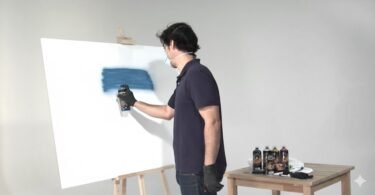
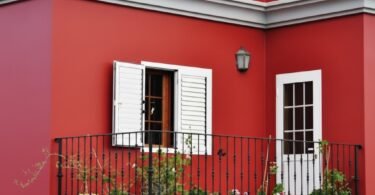
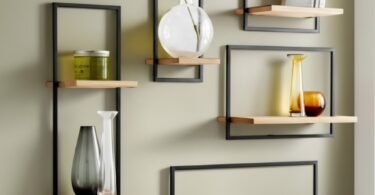
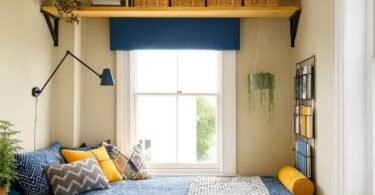
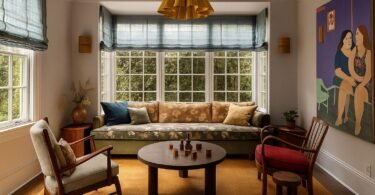
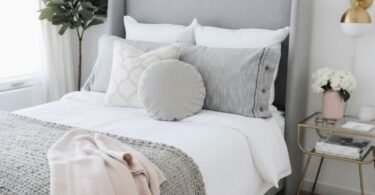
Leave a Comment